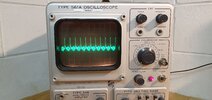nzoomed
Member
I dont understand what's going on here, but it seems to be doing it with several different types, except for a small PCB mount one I've got.
Specs say supply voltage is 3-12V.
I have my lab power supply set to 5V.
But the voltage rises on the meter when I connect the buzzer!
My multimeter reads about 7V when connected but drops back to 5V once I disconnect the buzzer.
Any ideas?
I also notice the dropout light comes on when connected.
Doesn't make any sense since these things draw little to no current.
I am using this with an arduino so don't want the 5V rail to do silly things and blow up the microcontroller.
I haven't tested with the arduino power supply yet to see if it does anything silly.
Perhaps its just this lab power supply that's behaving weird?

Specs say supply voltage is 3-12V.
I have my lab power supply set to 5V.
But the voltage rises on the meter when I connect the buzzer!
My multimeter reads about 7V when connected but drops back to 5V once I disconnect the buzzer.
Any ideas?
I also notice the dropout light comes on when connected.
Doesn't make any sense since these things draw little to no current.
I am using this with an arduino so don't want the 5V rail to do silly things and blow up the microcontroller.
I haven't tested with the arduino power supply yet to see if it does anything silly.
Perhaps its just this lab power supply that's behaving weird?




